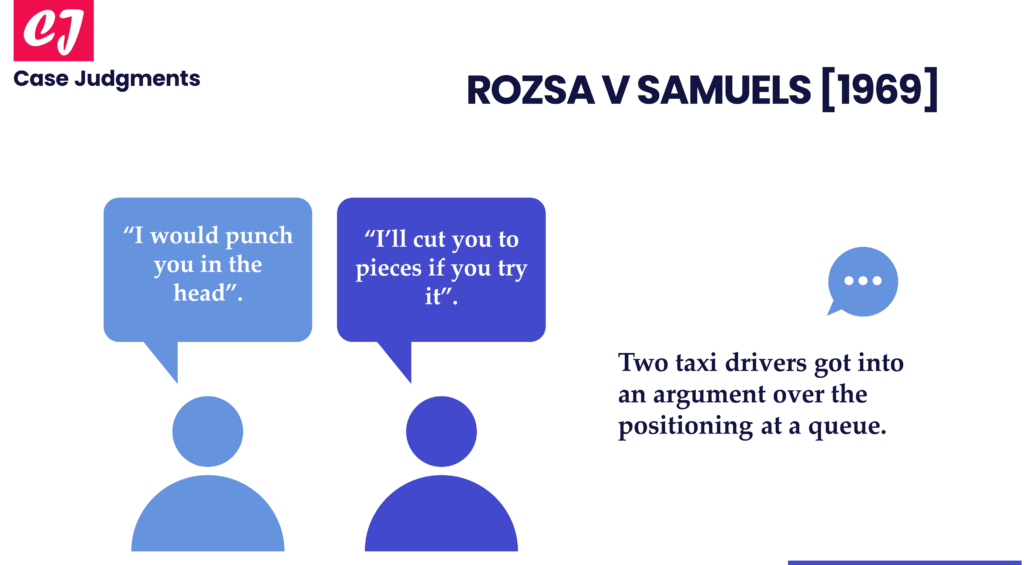
A Case Summary of Zanker v Vartzokas (1988)
Case name & citation: Zanker v Vartzokas (1988) 34 A Crim R 11
Zanker v Vartzokas (1988) is a legal case that involved a potentially dangerous situation where a woman felt threatened by a man’s words and actions. The case raises questions about assault and particularly the relevance of the imminence of harm. How imminent does a threat of violence need to be in order to constitute assault?
Below are the case facts and details:
Facts of the case (Zanker v Vartzokas)
A woman accepted a ride from a young man. While they were in the moving car, the man made a sexual proposition to the woman and offered her money, which she rejected. She demanded him to stop the car so she could get out. But the situation escalated when the man accelerated the car and said to the woman, “I’m going to take you to my mate’s house. He will really fix you up.”
The woman was terrified of the threat and jumped out of the moving vehicle which was going at around 60 kilometres per hour. As a result, she sustained injuries. The male was eventually accused and convicted of assault.
Issue that arose
To be convicted of assault, it must be proved that the accused has caused the victim to fear or apprehend immediate and unlawful violence.
The Court agreed that the act of accelerating the car and issuing a threat of taking her to his mate’s house was considered a direct threat to her safety and well-being. Was this threat, however, immediate enough to constitute an assault?
The case highlights this point.
Judgment of the Court in Zanker v Vartzokas
The Court’s decision emphasized that the threat made by the man, although concerning violence that would occur in the future at the end of the woman’s supposed (unlawful) imprisonment, was still considered imminent or immediate in nature. This is so because it caused the plaintiff to reasonably believe that this violence would occur as soon as her unlawful imprisonment ended (i.e., as soon as the car reached the destination).
In other words, the threat conveyed a clear and immediate danger, even though the actual harm was set to happen in the future, right after the woman’s “imprisonment” ended. The threat placed a fear of relatively immediate violence in the woman’s mind and it continued to have effect as the vehicle travelled toward the destination, leaving the plaintiff at the defendant’s mercy. The circumstances were such that led the plaintiff to jump.
It was, therefore, effectively found imminent to be constituted assault.
Conclusion
The Court’s ruling clarified that it was not necessary for the injury or harm to be physically immediate; instead, it sufficed that the threat of harm had an immediate impact on the victim’s state of mind and induced fear or apprehension.
List of references:
- http://ndl.ethernet.edu.et/bitstream/123456789/49417/1/17.pdf
- https://fpbl.com.au/fpbl2022/Cases/zanker.htm
- https://www.alg.com.au/2023/03/07/but-i-never-hit-him-how-can-i-be-charged-with-an-assault-common-assault-101/
- https://eversol.com.au/2021/08/07/the-common-crime-of-common-assault/
You might also like:
More from tort law:

